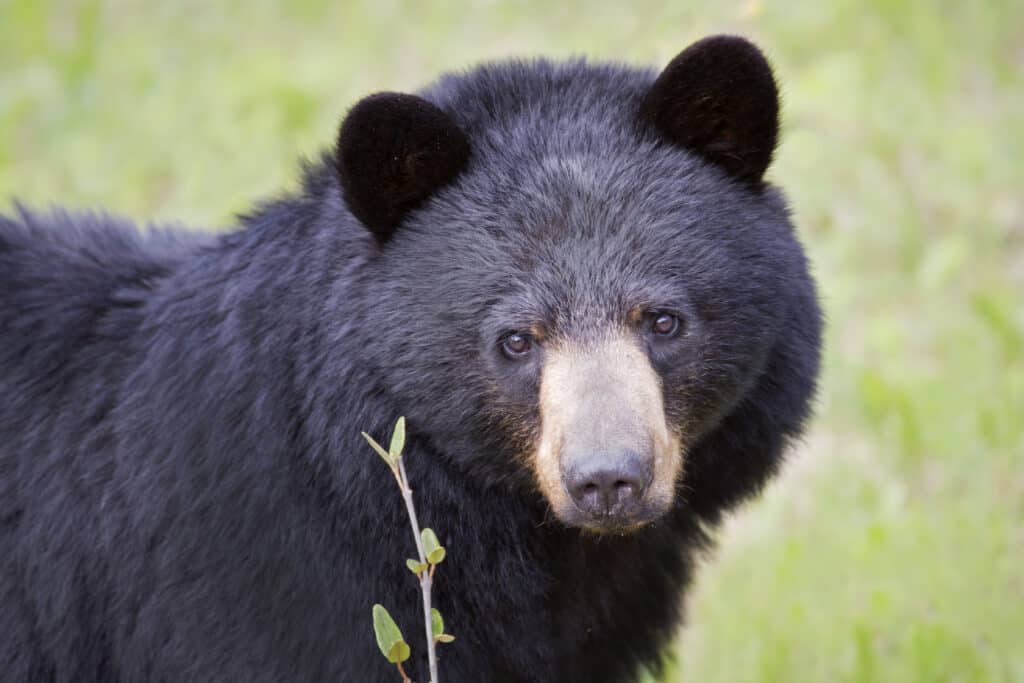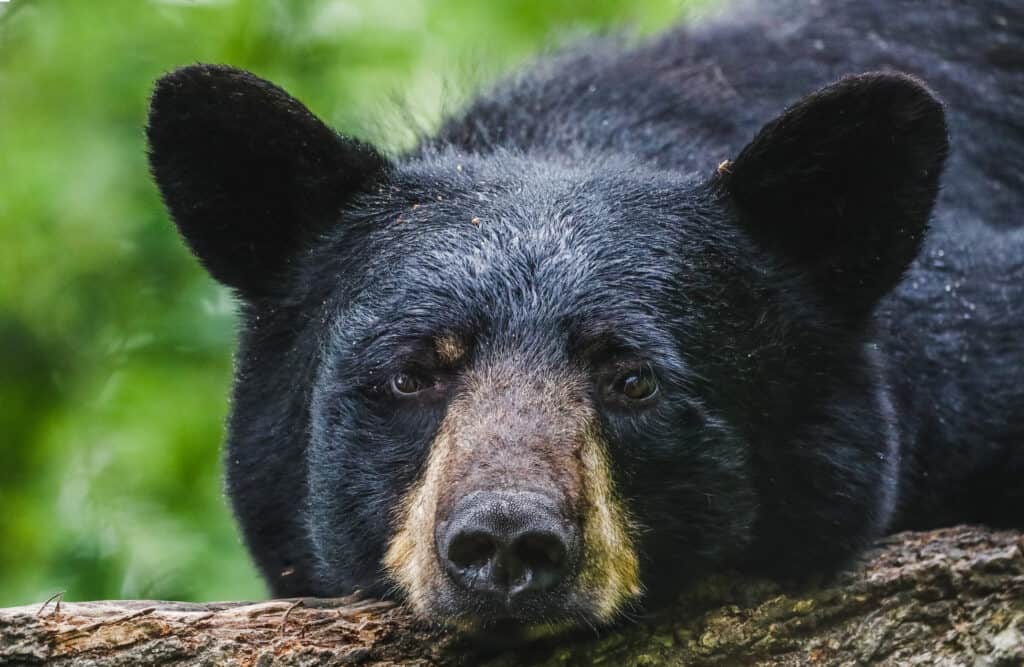Mississippi is also called “The Hospitality State” and “The Magnolia State.” Both of these names honor the state’s rich cultural and natural histories. Mississippians pride themselves on their southern hospitality, a cultural stereotype of southern residents as warm, kind, and welcoming to strangers. Similarly, it’s hard to visit Mississippi and not appreciate its natural beauty. From forests and woodlands full of magnolia trees that give Mississippi its nickname to the fertile floodplain of the Mississippi Delta, the state boasts an incredible bounty of geographic treasures.
Mississippi is home to a wide variety of plants and animals. Approximately 420 bird species, 204 native fish species, and 63 crayfish species reside in Mississippi. The state also supports a tiny number of black bears. In the past, thousands of bears resided in Mississippi, but overhunting and habitat loss almost drove bears completely out of the state. Still, the few bears that remain in the state manage to draw significant scrutiny from the public.
Today, we’ll discover the largest bear ever caught in Mississippi. We’ll also examine the types of bears found in the state, where they live, and how many bears live in the state.
The Largest Bear Ever Caught in Mississippi

A bear weighing 468 pounds was documented in Mississippi.
©Wild Art/Shutterstock.com
The title for the largest bear ever caught in Mississippi is complicated by a lack of data from before modern times. Native American tribes such as the Choctaw and Natchez hunted bears in the region for hundreds of years. These tribes would trade bear parts with the first European settlers who arrived at the end of the 17th century. Eventually, more settlers arrived in Mississippi, and the hunting of black bears increased exponentially.
In particular, hunting bears on horseback became a popular sport amongst residents and visitors. The sport attracted dignitaries from across the country, including President Theodore Roosevelt. In November 1902, Roosevelt and his hunting party began a bear hunt in southwestern Sharkey County, Mississippi. The party included Holt Collier, a former slave and one of the best bear hunters in U.S. history. Collier managed to corner and stun a 235-pound black bear with the stock of his rifle. He tied the bear to a tree so that Roosevelt could shoot it, but Roosevelt famously declined, saying it wasn’t fair sport. Upon hearing about the event, a toy maker asked for President’s permission to name a toy in his honor. This incident is where we get the name “Teddy Bear.”
While Holt’s capture of a 235-pound bear certainly found its way into history books, that bear was by no means the largest ever captured in the state. Unfortunately, the early 1900s witnessed a sharp decline in the state’s bear population. Few records from that time or before accurately record the measurements of captured bears. Therefore, the title of the largest bear in history in Mississippi may remain a mystery.
However, in the past few years, the Mississippi Department of Wildlife, Fisheries, and Parks (MDWFP) has recorded several large black bears in the state. One such bear managed to pop up on the MDWFP’s radar several times. In 2005, a 275-pound male black bear was caught in Washington County. While nothing special then, this same bear was recaptured in 2008, weighing 377 pounds, and again in 2009, weighing 386 pounds. This male bear reappeared one final time in July 2012 when he tipped the scales at 432 pounds. He held the record for the largest bear in the state until April 2017, when a sport-utility vehicle collided with a bear in Wilkinson County. Upon measuring the bear, MDWFP agents confirmed the bear weighed 468 pounds, making him the largest bear documented in Mississippi in contemporary times.
Where Is Wilkinson County Located on a Map?
Wilkinson County is situated in Mississippi’s southwest corner. The county seat is Woodville and its biggest town is Centreville. It is east of the Mississippi River and southwest of Jackson.
Bears in Mississippi: Types and Appearance
The American black bear (Ursus americanus) represents the only bear species found in Mississippi. A medium-sized species, the American black bear ranks as the smallest bear in North America after the grizzly bear (Ursus arctos) and polar bear (Ursus maritimus). That said, the American black bear contains numerous subspecies, two of which reside in Mississippi. These include the standard American black bear as well as the Louisiana black bear (Ursus americanus luteolus). Like many subspecies, the Louisiana black bear’s validity remains up for debate. In terms of appearance, Louisiana black bears roughly resemble other American black bears. You can tell them apart by their skull morphology, which tends to look narrower, flatter, and longer than an average black bear.
Some of the factors that determine a bear’s size include sex, age, and time of year. Older bears normally measure larger than juveniles, and bears weigh most in the fall as they put on weight to prepare for winter. On average, American black bears weigh between 90 and 500 pounds, with males usually measuring larger than females. However, exceptionally larger specimens can tip the scales at 700 or more pounds. In terms of length, most black bears measure from 3 to 5 feet long. When standing on their hind legs, however, they can easily reach heights upwards of 7 feet.
American black bears feature rounded erect ears and short, almost imperceptible tails. The majority of black bears possess a uniform thick, black coat aside from a brown muzzle. However, different coat varieties exist in nature, including dark brown, blue-gray, blonde, and cinnamon. For example, Louisiana black bears typically appear black, but around 10% feature a cinnamon-colored coat.
Bears in Mississippi: Habitat
Historically, you could find American black bears throughout almost the entirety of North America. However, overhunting led to their extirpation from several regions, most notably the American Midwest. Today, most black bears live in Alaska, Canada, the Pacific Northwest, New England, and the Great Lakes region. That said, you can find a smaller population in the American south and parts of Mexico. Black bears live in various habitats, including forests and woodlands, shrublands, mountainous regions, riparian zones, and swamps and wetlands. Although they are highly adaptable, they prefer dense woodlands full of trees for them to climb.
Today, American black bears mostly live in the northern one-third of Mississippi, while Louisiana black bears live in the southern two-thirds. The few bears found in Mississippi tend to live in the bottomland and mixed hardwood forests around the Mississippi, Pascagoula, and Pearl Rivers. According to field research, breeding populations may exist in the Mississippi Delta near Bolivar, Sharkey, Issaquena, Warren, and Wilkinson counties.
How Many Bears Are There in Mississippi?
Presently, no one knows approximately how many bears live in Mississippi. In the early 1900s, the black bear population fell to a few dozen, and some experts suspect they disappeared completely from the state for a time. Thanks to government protection, bears slowly began to reappear in the state over the following decades. However, their population still remains far below historical levels. According to most estimates, you can find between 40 and 50 bears in Mississippi at any one time. On the higher end of the spectrum, some experts believe that up to 250 bears may live in Mississippi. However, most experts agree that this overestimates the total population.
Due to the small number of bears in the state, Mississippi classifies the American black bear as an Endangered species. However, experts estimate the total population of American black bears in North America at around 800,000. Given this distribution, the IUCN recognizes the American black bear as a species of Least Concern.
Is It Legal to Hunt Bears in Mississippi?
Prior to the 20th century, bears did not enjoy any legal protections in Mississippi. This lack of protection – along with habitat loss – ultimately led to the population collapse of bears in the state. In 1932, Mississippi took steps to protect the remaining bears in the state, and in 1974 the black bear appeared on the state’s first list of rare and threatened vertebrates. Finally, in 1984, Mississippi listed the black bear as an Endangered species. Thanks to this classification, it remains illegal to hunt bears in Mississippi to this day. While you can not willfully hunt, trap, or pursue a bear in Mississippi, the law does allow you to kill a bear in self-defense. Despite these protections, hunters illegally shoot and kill bears. The penalties for knowingly killing a black bear in Mississippi can include any or several of the following:
- A fine of no less than $2,000 and up to $5,000
- Five days in county jail
- Probation
- House arrest
- A loss of hunting privileges for not less than one consecutive year after conviction
Are Bears Dangerous?

Black bears are generally only dangerous when provoked or hungry.
©iStock.com/Mandy Fuller Photography
Few animals in North America possess the sheer power and killing potential of bears. After all, even a small female black bear poses a danger to a stronger-than-average person. They can run up to 30 miles per hour and excel at climbing, so you have no chance of outrunning a bear. Large black bears can produce a swipe force of 560 pounds and a bite force of 800 PSI. Despite their prowess, bears rarely attack humans. Most bear attacks occur when people accidentally get between a bear and food or a mother and her cubs. In fact, only around 1 fatal bear attack occurs in the US each year. As it stands, your chances of getting killed by a bear hover around 1 in 2.1 million.
If you run into a black bear in the wild, do not panic. In all likelihood, the bear will pay you no mind or simply move on. However, in case the bear starts to move toward you, stand up tall and move your arms above your head. The point of this exercise is to try to confuse the bear into thinking you look bigger than you are. Never turn your back on a bear or try to run away. Bears can run nearly 30 miles per hour, so running will do you no good. Additionally, while experts agree that you should play dead when attacked by a grizzly bear, do not play dead if you encounter a black bear. Black bears are scavengers, so playing dead may cause a black bear to take a bite out of you.
Lastly, if a black bear attacks you, be prepared to defend yourself with all your strength. Look for a makeshift weapon, such as a rock or a club, to ward off the bear. If you have a coat or backpack with you, keep them on, as they can provide protection against bites or swipes of a bear’s claws. Better yet, carry bear mace with you when hiking or camping. While bear mace won’t kill a bear, it can drive a bear off or buy you time to escape.
Conclusion
Long gone are the years of bear hunting by horseback in Mississippi. Today, you can likely find only 40 or 50 bears in the entire state. It’s highly unlikely that bear populations will return to the level they were before the arrival of European settlers. That said, you can still find the occasional giant bear wandering the forests of The Magnolia State.
Up Next…
- Discover the 10 Largest Bears in the World
- Discover the Largest Bear Ever Caught in Ohio
- Discover the Largest Bear Ever Caught in Oregon
- Discover the 4,000lb Bear That Was The Largest Ever
- Discover the Largest Bear Ever Caught in Missouri
The photo featured at the top of this post is © iStock.com/Mark Lee
Sources
- , Available here: https://www.mdwfp.com/wildlife-hunting/black-bear-program/#:~:text=The%20MDWFP%20Black%20Bear%20Program%20began%20in%20June,effort%20to%20learn%20more%20about%20this%20endangered%20species.
- , Available here: https://www.mdwfp.com/wildlife-hunting/black-bear-program/
- , Available here: https://www.mdwfp.com/media/news/wildlife-hunting/super-sized-surprise-468-pound-mississippi-bear-goes-against-type/
- , Available here: https://msbear.org/
Thank you for reading! Have some feedback for us? Contact the AZ Animals editorial team.






